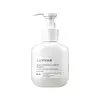What's inside
What's inside
 Key Ingredients
Key Ingredients

 Benefits
Benefits

 Concerns
Concerns

 Ingredients Side-by-side
Ingredients Side-by-side

Water
Skin ConditioningPropanediol
SolventDipropylene Glycol
HumectantTrehalose
HumectantButylene Glycol
HumectantCaprylyl Glycol
EmollientHydroxyacetophenone
AntioxidantPentylene Glycol
Skin ConditioningPanthenol
Skin ConditioningC12-14 Pareth-12
EmulsifyingSodium Citrate
BufferingEthylhexylglycerin
Skin ConditioningCitric Acid
BufferingDisodium EDTA
Allantoin
Skin ConditioningGluconolactone
Skin ConditioningCentella Asiatica Extract
CleansingHamamelis Virginiana Extract
AntiseborrhoeicMelaleuca Alternifolia Leaf Extract
PerfumingSalix Alba Bark Extract
AstringentPolyglyceryl-10 Myristate
Skin Conditioning1,2-Hexanediol
Skin ConditioningBambusa Vulgaris Extract
Skin ConditioningCaprylic/Capric Triglyceride
MaskingEthylhexyl Palmitate
EmollientCetyl Ethylhexanoate
EmollientLonicera Japonica Flower Extract
Skin ConditioningSodium Hyaluronate
HumectantHydrolyzed Hyaluronic Acid
HumectantHydroxypropyltrimonium Hyaluronate
Sodium Hyaluronate Crosspolymer
HumectantSodium Acetylated Hyaluronate
HumectantWater, Propanediol, Dipropylene Glycol, Trehalose, Butylene Glycol, Caprylyl Glycol, Hydroxyacetophenone, Pentylene Glycol, Panthenol, C12-14 Pareth-12, Sodium Citrate, Ethylhexylglycerin, Citric Acid, Disodium EDTA, Allantoin, Gluconolactone, Centella Asiatica Extract, Hamamelis Virginiana Extract, Melaleuca Alternifolia Leaf Extract, Salix Alba Bark Extract, Polyglyceryl-10 Myristate, 1,2-Hexanediol, Bambusa Vulgaris Extract, Caprylic/Capric Triglyceride, Ethylhexyl Palmitate, Cetyl Ethylhexanoate, Lonicera Japonica Flower Extract, Sodium Hyaluronate, Hydrolyzed Hyaluronic Acid, Hydroxypropyltrimonium Hyaluronate, Sodium Hyaluronate Crosspolymer, Sodium Acetylated Hyaluronate
Water
Skin ConditioningGlycerin
HumectantCocamidopropyl Betaine
CleansingLauryl Glucoside
CleansingCoco-Glucoside
CleansingXanthan Gum
EmulsifyingCitric Acid
BufferingParfum
MaskingGlyceryl Caprylate
EmollientLactobacillus Ferment Lysate
Skin ConditioningDisodium EDTA
Ethylhexylglycerin
Skin ConditioningButylene Glycol
HumectantLactic Acid
BufferingPanax Ginseng Root Water
Masking1,2-Hexanediol
Skin ConditioningBupleurum Chinense Root Extract
AstringentAngelica Acutiloba Root Extract
Skin ConditioningOphiopogon Japonicus Root Extract
Skin ConditioningTocopherol
AntioxidantWater, Glycerin, Cocamidopropyl Betaine, Lauryl Glucoside, Coco-Glucoside, Xanthan Gum, Citric Acid, Parfum, Glyceryl Caprylate, Lactobacillus Ferment Lysate, Disodium EDTA, Ethylhexylglycerin, Butylene Glycol, Lactic Acid, Panax Ginseng Root Water, 1,2-Hexanediol, Bupleurum Chinense Root Extract, Angelica Acutiloba Root Extract, Ophiopogon Japonicus Root Extract, Tocopherol
 Reviews
Reviews

Ingredients Explained
These ingredients are found in both products.
Ingredients higher up in an ingredient list are typically present in a larger amount.
1,2-Hexanediol is a synthetic liquid and another multi-functional powerhouse.
It is a:
- Humectant, drawing moisture into the skin
- Emollient, helping to soften skin
- Solvent, dispersing and stabilizing formulas
- Preservative booster, enhancing the antimicrobial activity of other preservatives
Butylene Glycol (or BG) is used within cosmetic products for a few different reasons:
Overall, Butylene Glycol is a safe and well-rounded ingredient that works well with other ingredients.
Though this ingredient works well with most skin types, some people with sensitive skin may experience a reaction such as allergic rashes, closed comedones, or itchiness.
Learn more about Butylene GlycolCitric Acid is an alpha hydroxy acid (AHA) naturally found in citrus fruits like oranges, lemons, and limes.
Like other AHAs, citric acid can exfoliate skin by breaking down the bonds that hold dead skin cells together. This helps reveal smoother and brighter skin underneath.
However, this exfoliating effect only happens at high concentrations (20%) which can be hard to find in cosmetic products.
Due to this, citric acid is usually included in small amounts as a pH adjuster. This helps keep products slightly more acidic and compatible with skin's natural pH.
In skincare formulas, citric acid can:
While it can provide some skin benefits, research shows lactic acid and glycolic acid are generally more effective and less irritating exfoliants.
Most citric acid used in skincare today is made by fermenting sugars (usually from molasses). This synthetic version is identical to the natural citrus form but easier to stabilize and use in formulations.
Read more about some other popular AHA's here:
Learn more about Citric AcidDisodium EDTA plays a role in making products more stable by aiding other preservatives.
It is a chelating agent, meaning it neutralizes metal ions that may be found in a product.
Disodium EDTA is a salt of edetic acid and is found to be safe in cosmetic ingredients.
Learn more about Disodium EDTAEthylhexylglycerin (we can't pronounce this either) is commonly used as a preservative and skin softener. It is derived from glyceryl.
You might see Ethylhexylglycerin often paired with other preservatives such as phenoxyethanol. Ethylhexylglycerin has been found to increase the effectiveness of these other preservatives.
Water. It's the most common cosmetic ingredient of all. You'll usually see it at the top of ingredient lists, meaning that it makes up the largest part of the product.
So why is it so popular? Water most often acts as a solvent - this means that it helps dissolve other ingredients into the formulation.
You'll also recognize water as that liquid we all need to stay alive. If you see this, drink a glass of water. Stay hydrated!
Learn more about Water